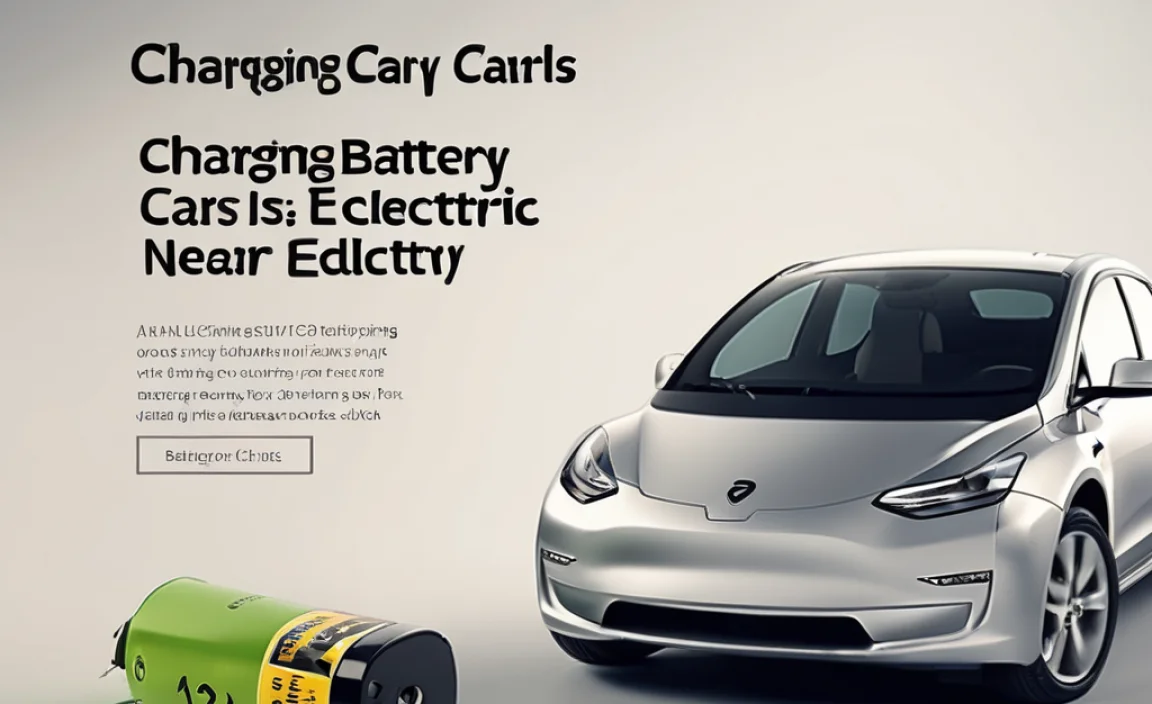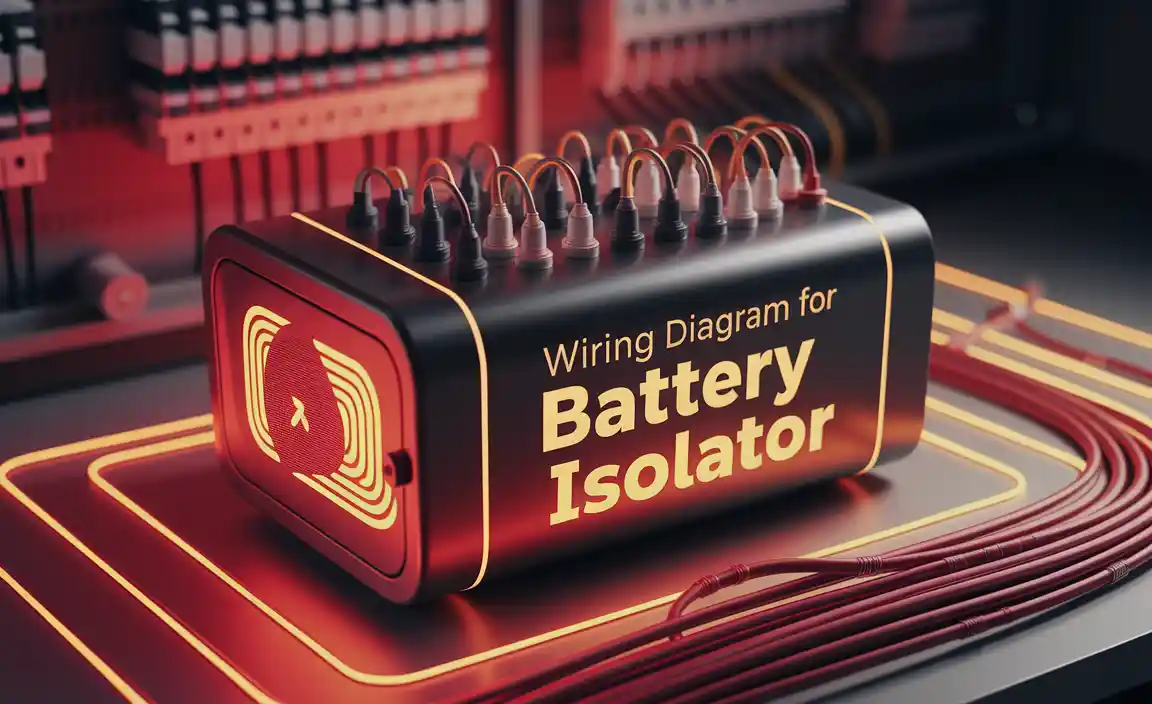Quick Summary
Choosing the right 12v car battery for winter is crucial for reliable starts. Look for cold-cranking amps (CCA) as a key indicator of winter performance. This guide helps you compare options, understand what matters most, and ensure your vehicle powers through the cold.
Winter can be tough on your car, and one of the first things to struggle is the battery. When the temperature drops, your car battery has to work harder to start your engine. If it’s not up to the task, you could find yourself stranded. But don’t worry! This guide is here to help you understand exactly what to look for when you need to compare 12v car batteries for winter. We’ll break down the important features in simple terms, so you can make a smart choice and keep your car running smoothly, no matter how cold it gets.
We’ll cover everything from what those numbers on the battery mean to how to pick the perfect one for your needs. Get ready to feel confident about your battery purchase!
Why Winter Demands More from Your Car Battery
Think of your car battery like your phone’s battery. When it gets cold, your phone often drains faster, right? Your car battery works similarly. In cold weather, the chemical reactions inside the battery slow down, meaning it produces less power.
At the same time, your engine oil becomes thicker. This makes the engine harder to turn over – it needs more power from the battery to get going. It’s a double whammy: the battery produces less power, and the engine needs more. This is why a healthy, strong battery is essential for winter driving.
Understanding Key Battery Terms: What to Look For
When you look at a car battery, you’ll see a lot of numbers and letters. Let’s make sense of the most important ones for winter performance:
Cold Cranking Amps (CCA): The Winter Hero
This is the most critical number for winter. CCA measures how much power a battery can deliver for 30 seconds at 0°F (-18°C) while maintaining a voltage above 7.2 volts. The higher the CCA rating, the better the battery will perform in cold temperatures. Your car’s owner manual will often suggest a minimum CCA rating. In colder climates, it’s wise to exceed this minimum if possible for extra reliability.
Reserve Capacity (RC): Keeping the Lights On
Reserve Capacity tells you how long a fully charged battery can supply 25 amps at 80°F (27°C) before its voltage drops below 10.5 volts. While important for powering accessories when the engine is off, it’s less critical for starting in winter compared to CCA. However, a good RC offers peace of mind if you need to use electronics while waiting for a tow or during a power outage.
Voltage (V): The Standard
Most cars use a 12-volt battery system. This is a standard across the industry, so you’ll be looking for a 12v battery. The actual voltage of a fully charged car battery is a bit higher, around 12.6 volts when not under load.
Battery Size and Terminal Type: Making Sure it Fits
Batteries come in different physical sizes and have different terminal placements. You need to ensure the new battery will physically fit in your car’s battery tray and that the positive and negative terminals are positioned correctly to connect to your car’s cables. This is often referred to by a BCI (Battery Council International) group size. Always check your car’s manual or consult with a parts store to confirm the correct group size for your vehicle.
Comparing 12v Car Batteries for Winter: A Practical Guide
When you’re ready to compare, think about these factors:
1. Your Vehicle’s Needs
Always start with your car’s owner’s manual. It’s your best resource for the recommended CCA and group size. Using a battery with too low a CCA can lead to starting problems in the cold. Using one with significantly higher CCA than recommended usually won’t hurt, but it might be overkill and more expensive.
2. Climate Considerations
If you live in an area with very harsh winters, where temperatures frequently dip well below freezing, investing in a battery with a higher-than-recommended CCA rating is a smart move. Even if your manufacturer suggests 500 CCA, opting for 600 or 700 CCA can provide a significant boost in reliability during extreme cold.
3. Battery Type: The Choices
Most car batteries today are lead-acid. Within that, you have:
- Flooded Lead-Acid Batteries (Wet Cell): These are the most common and usually the most affordable type. They require occasional maintenance, like checking the electrolyte levels, though many are now “maintenance-free” with sealed tops.
- Enhanced Flooded Batteries (EFB): These are a step up from standard flooded batteries and are designed for vehicles with start-stop technology or higher electrical demands. They offer better cycling performance and vibration resistance.
- Absorbent Glass Mat (AGM) Batteries: AGM batteries are generally considered the premium option. They use fiberglass mats to absorb the electrolyte, making them more robust, vibration-resistant, and able to handle deep discharges better. They are ideal for vehicles with a lot of electronics and start-stop systems.
For winter performance, AGM batteries often excel due to their consistent power output and resistance to extreme temperatures. However, they are also typically more expensive.
4. Brand and Warranty
Reputable brands often offer better quality control and customer support. Pay close attention to the warranty. A longer warranty, especially one with a good “free replacement” period, indicates the manufacturer’s confidence in their product’s longevity and performance.
5. Price vs. Value
The cheapest battery might not be the best value, especially for winter. A slightly more expensive battery with a higher CCA and a longer warranty can save you money and hassle in the long run by preventing jump-starts and premature replacement.
How to Compare Specs: A Sample Table
Let’s look at how two hypothetical batteries might compare:
| Feature | Battery A (Value Option) | Battery B (Premium Winter) |
|---|---|---|
| CCA (Cold Cranking Amps) | 550 CCA | 700 CCA |
| RC (Reserve Capacity) | 90 minutes | 120 minutes |
| Warranty | 2-year free replacement | 3-year free replacement |
| Battery Type | Flooded Lead-Acid | AGM |
| Price | $$ | $$$ |
| Best For | Moderate winters; budget-conscious drivers | Harsh winters; vehicles with high demand; maximum reliability |
Beyond CCA: Other Factors Influencing Battery Life
While CCA is king for winter starting, other factors contribute to a battery’s overall health and longevity:
Battery Age
Car batteries don’t last forever. Even if they seem to be working fine, older batteries are more prone to failure, especially under the stress of cold weather. Most batteries last between 3 to 5 years. Check the date code stamped on the battery (often in a format like A2 for January 2022). If it’s more than 3-4 years old, and you haven’t replaced it recently, it might be time to consider a new one before winter hits.
Maintenance History
For traditional flooded batteries, ensuring the electrolyte levels are kept topped up with distilled water can prolong life. However, most modern batteries are sealed and require no such maintenance. Keeping battery terminals clean and free of corrosion is also important; corrosion interferes with the electrical connection.
Charging System Health
Your car’s alternator is responsible for recharging the battery while the engine is running. If your alternator isn’t working properly, it can lead to an undercharged battery, which is especially susceptible to freezing and failing in cold weather. A quick check of your car’s charging system can prevent many battery problems. Many auto parts stores offer free battery and alternator testing.
Learn more about how your car’s charging system works at HowStuffWorks.
How to Replace Your 12v Car Battery: A Beginner’s Guide
Replacing a car battery isn’t overly complicated, but safety is paramount. Always wear safety glasses and gloves. Batteries contain corrosive acid and can release explosive gases.
Tools You’ll Need:
- Wrench set (typically 10mm and 13mm are common for terminal clamps and hold-downs)
- Wire brush or battery terminal cleaner
- Safety glasses
- Gloves
- New 12v car battery
- Optional: Anti-corrosion spray or grease
Step-by-Step Replacement:
- Park Safely: Ensure your car is on a flat surface, the engine is off and cool, and the parking brake is engaged.
- Locate the Battery: It’s usually under the hood, often on one side. Some newer vehicles may have it in the trunk or under a seat. Consult your owner’s manual if you can’t find it.
- Disconnect the Negative Terminal First: Using your wrench, loosen the nut on the negative (-) terminal clamp. Remove the cable from the terminal. It’s crucial to disconnect the negative first to prevent accidental short circuits if your wrench touches metal while working on the positive terminal.
- Disconnect the Positive Terminal: Now, loosen the nut on the positive (+) terminal clamp and remove the cable.
- Remove the Battery Hold-Down: Most batteries are secured by a bracket or clamp at the base or top. Remove the bolts or nuts holding this in place.
- Lift Out the Old Battery: Batteries are heavy! Lift it carefully by the handle (if it has one) straight up and out of the tray. Avoid tilting it excessively.
- Clean the Tray and Terminals: Use a wire brush or battery terminal cleaner to remove any corrosion from the battery tray and the vehicle’s cable clamps. This ensures a good connection.
- Install the New Battery: Carefully place the new battery into the tray, ensuring it’s oriented correctly (positive and negative terminals in the right positions).
- Secure the Hold-Down: Reinstall and tighten the hold-down bracket to keep the battery from moving.
- Reconnect the Positive Terminal First: Attach the positive (+) cable clamp to the positive terminal and tighten the nut.
- Reconnect the Negative Terminal Last: Attach the negative (-) cable clamp to the negative terminal and tighten the nut.
- Apply Anti-Corrosion (Optional): You can spray or apply a small amount of anti-corrosion grease to the terminals for added protection.
- Test: Start your car to ensure everything works correctly.
For a visual guide, check out resources from reputable automotive sites. A good example of DIY car maintenance can be found on ChrisFix’s YouTube channel, which offers clear, step-by-step video tutorials.
Maintaining Your Battery for Longevity
Even after getting a new battery, a couple of simple practices can help it last longer:
- Keep Terminals Clean: Periodically check for corrosion. If you see white or bluish powdery buildup, clean it off with a wire brush and a solution of baking soda and water.
- Ensure a Secure Fit: A loose battery can bounce around, damaging its internal structure and potentially causing short circuits. Ensure the hold-down is snug.
- Avoid Frequent Short Trips: Short trips don’t give the alternator enough time to fully recharge the battery. If you only take short drives, consider taking your car for a longer drive once a week.
- Check Battery Voltage: If you’re comfortable using a multimeter, you can check your battery’s voltage occasionally. A fully charged battery should read around 12.6 volts when the engine is off. A reading below 12.2 volts might indicate a charging issue or a weak battery.
When to Consider Battery Replacement
Don’t wait until your car won’t start. Watch for these signs that indicate your battery might be on its way out:
- Slow Engine Crank: The engine turns over slower than usual when you try to start it.
- Dim Headlights: Headlights seem dimmer than normal, especially at idle.
- Warning Light: The battery warning light on your dashboard illuminates.
- Corrosion on Terminals: Excessive buildup of corrosion can be a sign of battery leakage or stress.
- Swollen Battery Case: If the sides of the battery case look swollen or warped, it’s a sign of internal damage, often caused by heat or overcharging.
- Age: As mentioned, if your battery is over 3-4 years old, it’s a good idea to have it tested regularly and consider replacement before winter.
Frequently Asked Questions (FAQ)
Q1: How do I know if my car battery needs replacing for winter?
A: Signs include a slow engine crank, dim lights, a battery warning light, or if your battery is more than 3-4 years old. A professional test at an auto parts store is the most accurate way to know its condition.
Q2: What is the most important number to look for on a winter car battery?
A: Cold Cranking Amps (CCA) is the most important number. It tells you how much power the battery can deliver in freezing temperatures, crucial for starting your engine.
Q3: Can I use a car battery with a higher CCA than what my manual recommends?
A: Yes, using a battery with a higher CCA than recommended is generally safe and can even provide extra reliability in very cold climates. Make sure it’s the correct physical size and group size for your vehicle.
Q4: How long does a car battery typically last?
A: A car battery typically lasts between 3 to 5 years, but this can vary depending on climate, driving habits, and battery quality. Extreme temperatures (both hot and cold) can shorten a battery’s lifespan.
Q5: What’s the difference between an EFB and an AGM battery for winter?
A: Both are better than standard flooded batteries. AGM batteries generally offer superior performance in extreme cold, vibration resistance, and deeper discharge capabilities, making them ideal for modern vehicles and harsh winters, but they are usually more expensive.
Q6: Is it safe to replace a car battery myself?
A: Yes, it is generally safe if you follow proper safety precautions. Always wear safety glasses and gloves, disconnect the negative terminal first, and reconnect it last. If you’re unsure, it’s best to have a professional do it.
Conclusion
By understanding what Cold Cranking Amps (CCA) means and paying attention to your vehicle’s specific needs, you can confidently choose a 12v car battery that will get you through the winter. Don’t let a weak battery leave you stranded; investing a little time in research and comparison can save you a lot of trouble when the temperatures plummet. Whether you opt for a value-driven flooded battery or a high-performance AGM, ensuring it’s the right fit and has sufficient CCA is key to reliable winter driving. Perform regular checks, and you’ll be well-prepared for the cold months ahead.





